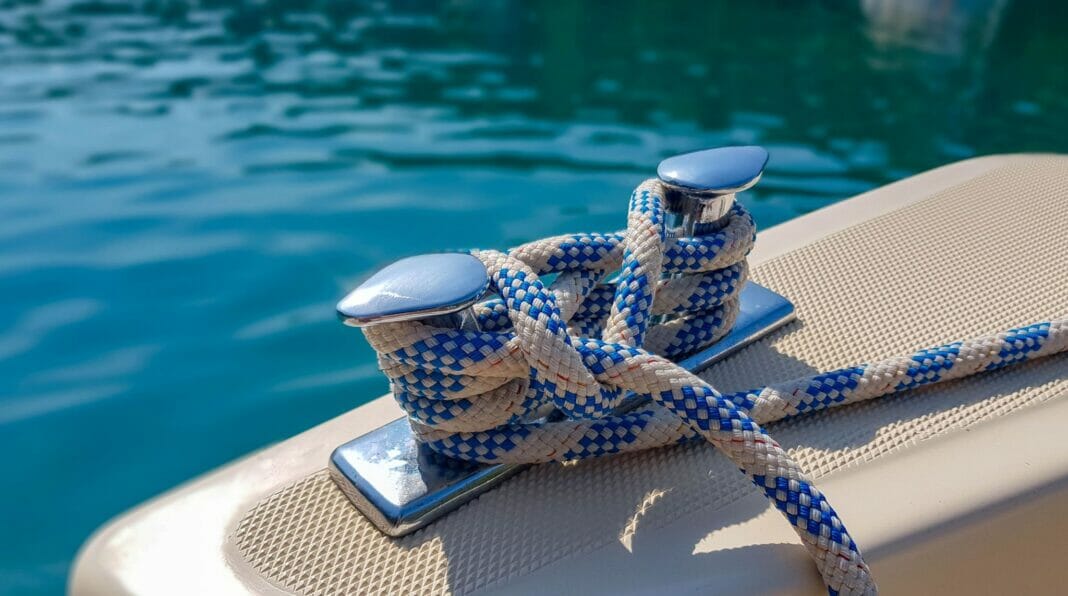Dock lines are an essential accessory for boat owners, ensuring the safe and secure mooring of watercraft at marinas, docks, or any other locations where boats are held in place. In this guide, we will explore the factors to consider when choosing the best dock lines for your watercraft, including the material, the size, and the versatility available with various dock lines.
Material: What Dock Lines Are Made Of
There are a few different materials commonly used in making dock lines, each offering unique benefits and trade-offs that boat owners should consider.
Nylon: Durability and Elasticity
Nylon is the most popular material for dock lines due to its excellent strength, abrasion resistance, and UV tolerance. With a natural stretchiness that allows the rope to absorb sudden shock loads and flex with waves or boat movement, nylon lines can help prevent stress on your boat’s cleats and chocks.
Polyester: UV and Abrasion Resistance
Polyester is another material with properties that make it a good choice for dock lines. Although not as stretchy as nylon, it has high UV resistance and incredible abrasion resistance. This can make it a better choice for boats docked in areas with harsh sunlight or chafing on cleats.
Polypropylene: Lightweight and Inexpensive
The third common material is polypropylene. While it is more lightweight and buoyant than nylon or polyester, it has lesser strength and is not as abrasion resistant. This material is generally best suited for smaller boats or as temporary dock lines.
Size and Length: Finding the Right Dimensions for Your Boat
Sizing Guide
The size of your dock line should depend on the size of your watercraft. As a general rule, choose 1/8 inch of line thickness for every 9 feet of boat length. For example, a 36-foot boat would need dock lines with a 1/2-inch diameter.
Length
When it comes to the length of your dock lines, you will need three types: bow lines, stern lines, and spring lines.
Bow Lines: These lines attach to the front of the boat and should be roughly equal to the boat’s overall length.
Stern Lines: The rearward lines, stern lines should be approximately 2/3 of the boat’s length.
Spring Lines: These lines run diagonally from the bow and stern to the dock to prevent the boat from moving forward or backward. Their length should ideally be 1.5 times the boat’s length.
Rope Construction: Brait, Double Braid, or Three-Strand
Brait (Octoplait)
Brait dock lines use an 8-strand construction that resembles a square. This type of line is known for its high shock absorption and excellent abrasion resistance. It is easy to handle, but can be bulkier when coiled or stowed.
Double Braid
Double braid dock lines have a braided core and a braided cover, creating a strong, flexible, and easily managed line. They are popular among boat owners due to their strength, comfortable handling, and attractive appearance.
Three-Strand
Three-strand dock lines have a twisted construction and are generally the most affordable option. Although not as elegant as braided lines, they are strong, durable, and easily spliced or repaired. This is a dependable option, but it can be more challenging to handle and coil.
Choosing the best dock lines for your boat involves considering the material, size, and construction of the lines. Nylon and polyester offer the best mix of strength, durability, and UV resistance, while polypropylene may work best for smaller boats as temporary lines. Size your lines using the standard 1/8 inch per 9 feet ratio and account for the appropriate lengths of bow, stern, and spring lines. Finally, choose a construction that meets both your preferences for handling and appearance. By following these guidelines, you’ll be able to select the best dock lines to suit your specific needs and keep your boat secure in any mooring situation.


